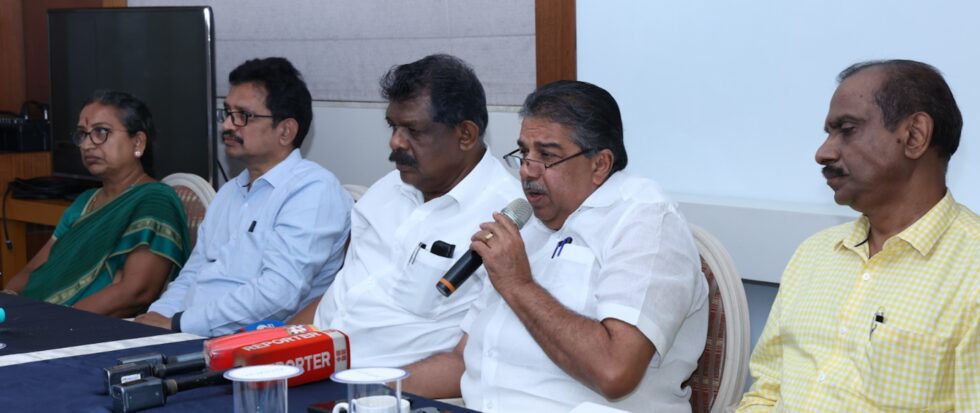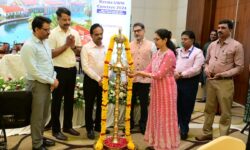
THIRUVANANTHAPURAM:
Fisheries Minister Saji Cherian has said that the offshore breakwater project being implemented at Poonthura on the outskirts of the capital is a success in its first phase.
Addressing the media after a review meeting of the project on Wednesday, the Minister said the remaining work is expected to be completed before the monsoon season. More dredgers and barges were being pressed into service for its timely completion.
“Of the 750-metre long offshore Geotube installation planned to protect the shoreline as part of a pilot project, 200 metres have already been completed. The contractors will be asked to complete the remaining 500 metres this season,” Cherian said.
“After the installation of the Geotube at Poonthura, the stretch up to Shankhumukham will be implemented without delay. The first phase in Poontura is successful. If the pilot project is successful, the government will consider extending it along the state’s entire coastline.”
Poonthura was experiencing the worst coastal erosion, which the conventional seawall failed to resist. Also, the government has to spend a good amount of money every year for its reconstruction.
To address the phenomenon, the National Institute of Ocean Technology (NIOT) implemented a method of preventing the loss of land by installing Geotubes offshore in Chennai as a pilot project. A team of officials from Kerala led by the minister visited this project and explored the possibility of implementing it here.
Based on the NIOT study, the Kerala Infrastructure Investment Fund Board (KIIFB) sanctioned Rs 150 crore and released Rs 20.73 crore to implement a one km-long pilot project from Poonthura to Shankhumukham, which is most prone to sea attacks in the state.
Under this method, giant sand-filled Geotubes of 12 to 15-metre diameter weighing 250 tonnes are installed up to eight metres deep. A 100-metre stretch was completed in April 2022 using massive dredgers and barges and trained deep-sea divers.
Recent deep-sea research found the formation of an increasing amount of permanent land here and the spawning of various species of fish around the Geotube while preventing the landward retreat of the shoreline.
In the remaining part, the installation of the Geotube resumed in January 2024, and work on another stretch of 100 metres is now underway.
Studies conducted by central research institutes like NIOT and the National Centre for Coastal Research (NCCR) have found the onshore breakwater construction at Poonthura using Geotubes to be effective, least expensive and environment-friendly.
In the meeting, Antony Raju MLA said the Geotube costs only one-tenth the cost of laying rock seawalls, and it is eco-friendly and safe.
PI Sheik Pareeth, managing director of Kerala State Coastal Area Development Corporation (KSCADC), which is implementing the Geotube Offshore Breakwater Coastal Protection Project, said it was the first of its kind in India to be implemented in a turbulent coastal area, overcoming many hurdles in a short period by a state government for protecting its shoreline.
MV Ramanamurthy, Director, Deep Ocean Mission, Ministry of Earth Sciences and Director, National Center for Coastal Research (NCCR), Dr Vijaya Rvichandran, scientist, National Institute of Ocean Technology, Mary Gypsy, Corporation Councilor, Mohammad Ansari, Chief engineer, Harbour Engineering Department, Kiran AS, National Institute of Ocean Technology scientist, Fr Darwin Peter, Poonthura Parish priest, representatives of the contract company of the project and others attended the meeting.
The project has emerged as a pioneering initiative to mitigate coastal erosion challenges and prevent reckless quarrying operations. It benefits both local fishermen and tourists, besides preserving marine life.
Strategically placed offshore, the custom-made Geotube acts as a barrier, diminishing the strength of oncoming sea waves. It results in a gentler wave action, depositing sand particles onto the shore, creating a stable and usable beach.




